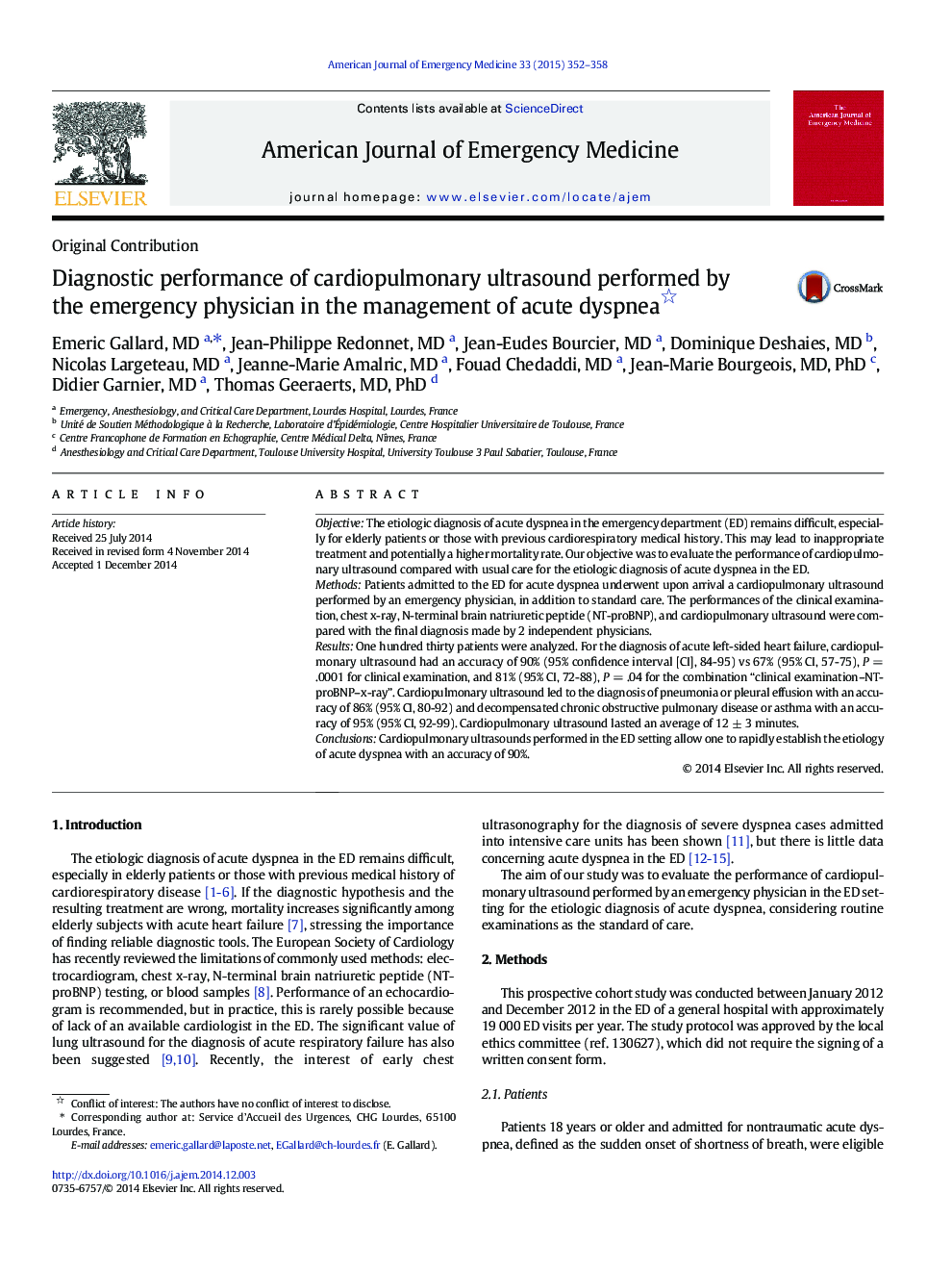| Article ID | Journal | Published Year | Pages | File Type |
|---|---|---|---|---|
| 3224765 | The American Journal of Emergency Medicine | 2015 | 7 Pages |
ObjectiveThe etiologic diagnosis of acute dyspnea in the emergency department (ED) remains difficult, especially for elderly patients or those with previous cardiorespiratory medical history. This may lead to inappropriate treatment and potentially a higher mortality rate. Our objective was to evaluate the performance of cardiopulmonary ultrasound compared with usual care for the etiologic diagnosis of acute dyspnea in the ED.MethodsPatients admitted to the ED for acute dyspnea underwent upon arrival a cardiopulmonary ultrasound performed by an emergency physician, in addition to standard care. The performances of the clinical examination, chest x-ray, N-terminal brain natriuretic peptide (NT-proBNP), and cardiopulmonary ultrasound were compared with the final diagnosis made by 2 independent physicians.ResultsOne hundred thirty patients were analyzed. For the diagnosis of acute left-sided heart failure, cardiopulmonary ultrasound had an accuracy of 90% (95% confidence interval [CI], 84-95) vs 67% (95% CI, 57-75), P = .0001 for clinical examination, and 81% (95% CI, 72-88), P = .04 for the combination “clinical examination–NT-proBNP–x-ray”. Cardiopulmonary ultrasound led to the diagnosis of pneumonia or pleural effusion with an accuracy of 86% (95% CI, 80-92) and decompensated chronic obstructive pulmonary disease or asthma with an accuracy of 95% (95% CI, 92-99). Cardiopulmonary ultrasound lasted an average of 12 ± 3 minutes.ConclusionsCardiopulmonary ultrasounds performed in the ED setting allow one to rapidly establish the etiology of acute dyspnea with an accuracy of 90%.
